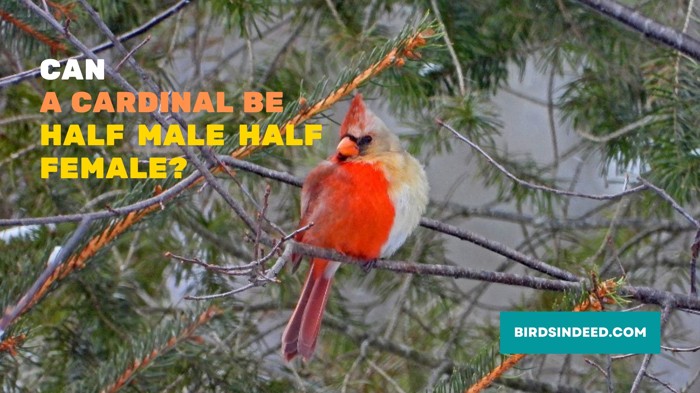Imagine, encountering a bird that completely defies the norms of gender—a cardinal that is half male and half female. You may find yourself wondering if a cardinal can truly possess such a unique blend of genders. This exceptional occurrence has captured the attention of bird enthusiasts worldwide; not just once, but multiple times in different locations! In this article, I talk about the scientific justifications for this phenomenon and share amazing stories from observers like Jamie Hill, Shirley Caldwell, Mary Bullard, and Brian Peer, who have witnessed these unique cardinals with both male and female organs.
However, it’s important to note that while these exceptional cardinals do exist, they are not common among the majority of northern cardinals. It would be a mistake to assume that their occurrence is widespread based on just a few exceptional cases.
Contents
- 1 What Are Split-Sex Cardinals?
- 2 HOW DOES A BIRD BECOME A BILATERAL GYNANDROMORPH?
- 3 Jamie Hill’s Post on Half Male Half Female Cardinal Created a Storm online
- 4 Pattie Gonia’s Display of Love for the Rare Dual-Gendered Cardinal
- 5 Shirley Caldwell’s Encounter with a Gynandromorphic Cardinal
- 6 Mary Bullard’s Proof of a Gynandromorph Cardinal
- 7 A Touching Tale of a Gynandromorph Cardinal’s Silent Struggle
- 8 That’s all twitchers
- 9 FREQUENTLY ASKED QUESTION
- 9.1 Why Can't a Cardinal Be Half Male And Half Female?
- 9.2 Can Birds Be Hermaphrodites?
- 9.3 Are All Bird Species Sexually Dimorphic?
- 9.4 When was the first sighting of a gynandromorph cardinal recorded?
- 9.5 What term do ornithologists use to refer to birds that exhibit both male and female characteristics?
- 9.6 What are the birds in Halfsiders?
- 9.7 Can gynandromorph cardinal birds reproduce?
What Are Split-Sex Cardinals?
Half-male, half-female cardinals are also called split-sex cardinals. This is a combind condition between male and female organs. Scientifically, it is termed bilateral gynandromorphism. This miraculous phenomenon involves the coexistence of both male and female organs within a single individual. The striking visual appearance of these birds, with distinct male and female traits on different sides, challenges traditional notions of avian sexuality. Jamie Hill (James R Hill III), an ex ornithologist said, “This bird would have a functioning ovary on its left side and a functioning single testis on its right. Theoretically, this bird could either mate with a normal male cardinal and lay fertile eggs, or it could mate with a normal female cardinal and father her eggs!”

However, split-sex cardinals showcase a mesmerizing blend of colors, with one side displaying the characteristic red plumage of males and the other side featuring the pale brown shades found in females. These visually striking “halfsiders” truly stand out in the avian world, highlighting the incredible diversity of nature. This blend of colors adds to their striking and extraordinary appearance.
HOW DOES A BIRD BECOME A BILATERAL GYNANDROMORPH?
In the intriguing world of avian biology, the process of a bird becoming a bilateral gynandromorph is shaped by unique sex determination mechanisms. Ex-ornithologist Jamie Hill shines a spotlight on this fascinating phenomenon, while drawing on the insights of Dr. Daniel Hooper, a former postdoctoral fellow at the Cornell Lab of Ornithology:
Unlike mammals, where males have one copy each of the X and Y chromosomes and females have two copies of the X chromosome, birds have a different sex chromosome system. Females possess one copy each of the Z and W chromosomes (ZW), while males have two copies of the Z chromosome (ZZ). During the formation of sex cells, birds typically produce cells with only one copy of either chromosome. However, on rare occasions, gynandromorphy occurs when a female egg cell develops with two nuclei—one carrying a Z chromosome and the other carrying a W chromosome. This exceptional egg is then fertilized by two Z-carrying sperm, resulting in the formation of an embryo with one side expressing male characteristics (ZZ) and the other side exhibiting female characteristics (ZW).
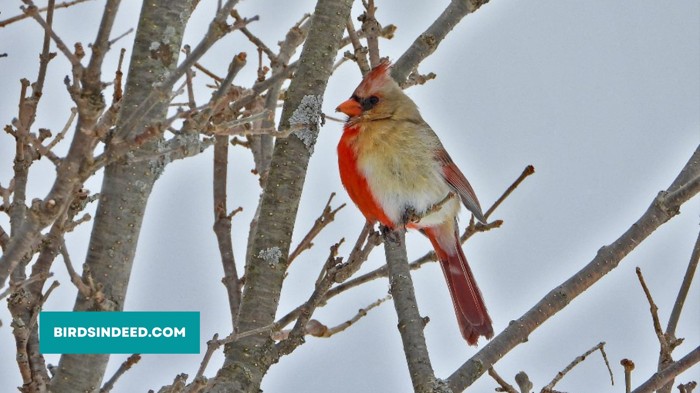
Jamie Hill’s Post on Half Male Half Female Cardinal Created a Storm online
As I mentioned earlier, let me share the surprising story of Jamie Hill, at the age of 69 (now 71), a former ornithologist and avid bird enthusiast with 48 years of birding experience. In February 2021, Jamie had an extraordinary encounter that left him in awe.
Through a friend’s recommendation, Jamie heard about an unusual bird visiting a feeder in Grand Valley, Pennsylvania. Intrigued by the description of a bird that appeared to be a blend of two species, Jamie and his companion, Annette Smith, wasted no time in reaching out to the homeowner to learn more.
The homeowner confirmed that it was a male Northern Cardinal with some white plumage on its breast. However, when Jamie received a photo of the bird taken by the homeowner, they were stunned. It was no ordinary bird—it was an extremely rare Bilateral Gynandromorph Northern Cardinal(Cardinalis cardinalis).

Eager to document this extraordinary sighting, Jamie and Annette sought permission to photograph the bird. Despite its brief visits to the feeders, they managed to capture approximately 50 images that showcased the bird’s memorable appearance. Later, Jamie posted the story online, he started his post with this “I have been birding for 48 years and yesterday, I had a once-in-a-lifetime, one-in-a-million bird encounter!” Shows how excited he was!
No wonder that Jamie Hill’s captivating story was featured in major outlets such as the BBC, CBC News, NBC News, and other widely popular newspapers. Not to mention, his Facebook post received 14,000+ reactions and 27,000+ shares! He truly deserves the appreciation for sharing this enticing tale, which has captivated both the birding community and a broader audience.
Mesmerizing Cosplay of Rare Gynandromorph Northern Cardinal
Lisa G. Buckley, PhD, a passionate bird enthusiast, skillfully painted the mesmerizing Gynandromorph Northern Cardinal as a unique tribute to Jamie Hill’s incredible encounter. Through her beautiful artistry, she expressed deep admiration for Jamie’s awe-inspiring experience and showcased their shared love for the fascinating world of birds. She posted it on her Facebook page named Bird Glamour. Here it is:
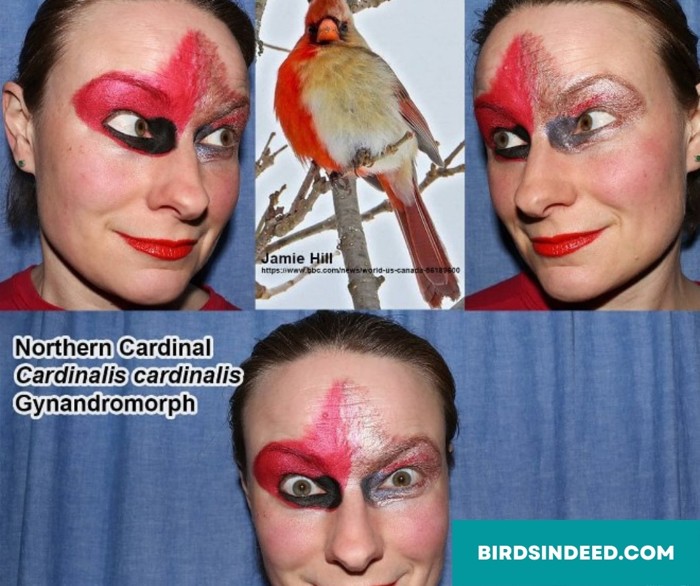
Pattie Gonia’s Display of Love for the Rare Dual-Gendered Cardinal
Not only Lisa G. Buckley, but also a popular environmentalist on Instagram named Pattie Gonia showed his love and affection for Jamie Hill’s Gynandromorph Northern Cardinal. He posted several pictures on March 2, 2021, featuring their face painted to resemble the bilateral gynandromorph cardinal that was found in Pennsylvania. More than 48,000 bird enthusiasts loved his approach.
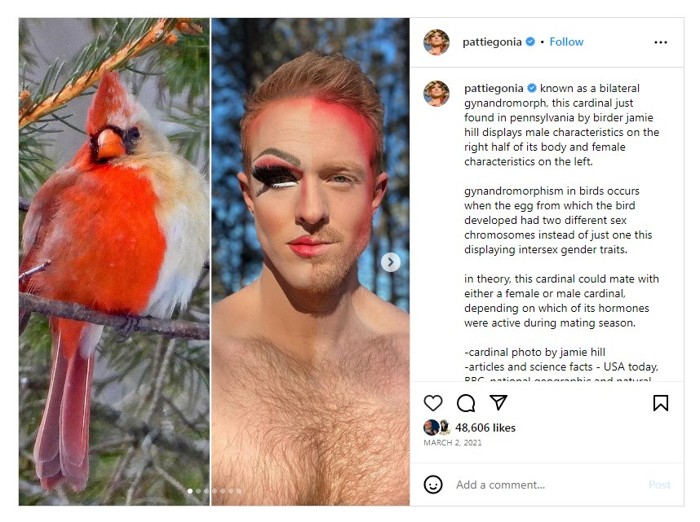
Shirley Caldwell’s Encounter with a Gynandromorphic Cardinal
Even before Jamie’s cncounter, back in 27 Janury 2019, a bird enthusiast named Shirley Caldwell spotted a Gynandromorphic Cardinal in Erie, Pennsylvania. Shirley was cooking in her kitchen, just like usual. She had some bird feeders outside the house. However, she randomly looked out the window. And suddenly she noticed something uncommon and pretty interesting—a common yet intriguing bird. Immediately, she called her husband, Jeffrey Caldwell, with whom they had been feeding birds in their backyard for over 25 years. Together, they observed a rare gynandromorphic cardinal, a half-vermillion marvel. Shirley shared her excitement with National Geographic, expressing, “Never did we ever think we would see something like this in all the years we’ve been feeding!”
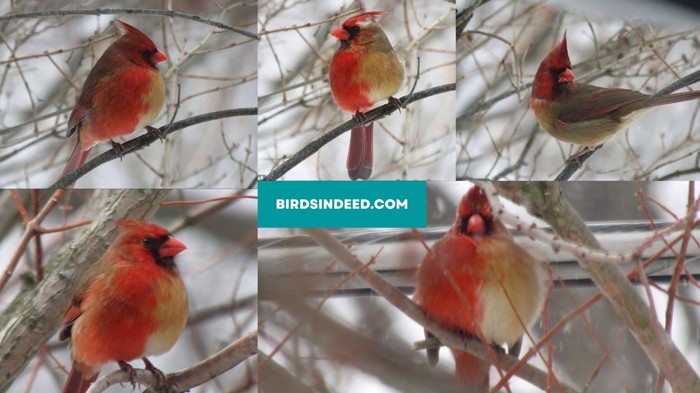
Shirley Caldwell was so deeply touched by this rare, once-in-a-lifetime experience that, despite capturing the gynandromorphic bird years ago, she still proudly displays a photograph of the cardinal on her Facebook profile. Even though the sighting took place years ago, the memory remains vivid in her mind, and the image serves as a constant reminder of the unforgettable encounter.
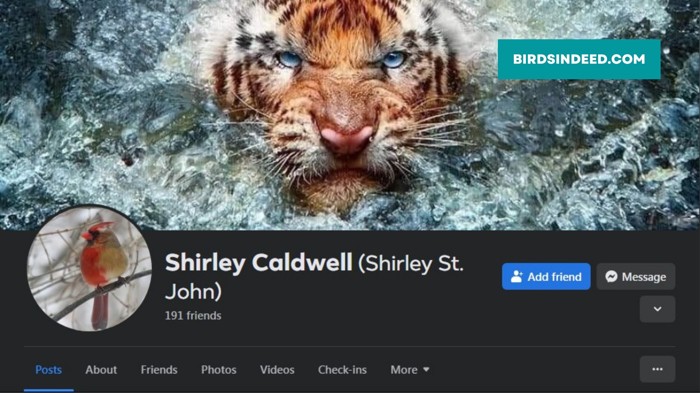
Mary Bullard’s Proof of a Gynandromorph Cardinal
We’ve kicked off our third cardinal story of today’s article “CAN A CARDINAL BE HALF MALE, HALF FEMALE?” This encounter also took place in the United States, where an avid birdwatcher named Mary Bullard was feeding her cardinals backward. On the morning of February 10, 2019, in Southeast Oklahoma, Mary had the opportunity to capture both a photo and a video of a cardinal unlike any she had seen before.
In the video you would see, a group of cardinals gathered at her backyard feeder, with one particular cardinal standing out—a striking display of male plumage on its left side and female plumage on its right side. Not to mention, it was an extremely rare half male half female cardinal. Mary wrote with excitement on her social media timeline, “I’ve been watching it for the last few weeks and finally have proof!” “I’m so excited I caught this on camera, I can’t stop smiling!” she added. She reminisced last year, “I am still hoping I see my little bird again someday!”

A Touching Tale of a Gynandromorph Cardinal’s Silent Struggle
However, the first gynandromorph cardinal spotted in this century was in Rock Island, Illinois, United States. The intriguing encounter took place in 2008 and this time the bird enthusiasts were Brian Peer, a behavioral ecologist, and his colleague Robert Motz. They spent a total of 40 days observing a dual-gendered cardinal. Their extensive research was published in The Wilson Journal of Ornithology at Western Illinois University. To date, it remains one of the largest researches related to bilateral gynandromorph bird. The left side of this bird displayed the vibrant red color typical of male Northern Cardinals, while the right side exhibited the brownish gray commonly seen in females.
Professor Brian Peer stated, ”It was never paired with another cardinal, was never heard vocalizing, and was not subjected to any unusual agonistic behaviors from other cardinals.” This cardinal remained lonely, avoided socializing with other birds and refrained from confrontations with other birds. It was never witnessed singing or attempting to attract a mate for reproduction. This bird reminds me of Travis Bickle from Taxi Driver(1976)!
Furthermore, Professor Peer emphasized that, fortunately, this bird never displayed any signs of suffering or adverse effects due to its tragic condition.

That’s all twitchers
Finally, if you ever come across one of these extraordinary gynandromorph cardinals or witness any rare sights, please remember to treat them with care and respect. These birds are precious and fragile, and it is crucial to ensure their well-being. Resist the temptation to harm or disturb them. Instead, report the sighting and provide evidence, such as photos or videos, to contribute to important research and conservation efforts.
While you’re enjoying your birdwatching adventures, remember to keep your bird feeders stocked with enough food to support these beautiful creatures. By creating a welcoming environment for birds, you can increase the chances of encountering unique species like the gynandromorph cardinals.
The stories shared by observers like Jamie Hill, Shirley Caldwell, Mary Bullard, and Professor Brian Peer offer inspiration and a deeper appreciation for the wonders of nature. Hopefully, you enjoyed these captivating tales and they inspire you to explore the avian world with a renewed sense of curiosity and awe.
You can also get creative and show your love for birds or any animals. Consider cosplay, create art, or engage in acts that celebrate and raise awareness about the fascinating creatures around us, just like Lisa G. Buckley and Pattie Gonia’s mesmerizing arts of the gynandromorph cardinal. Let your imagination soar and make a positive impact!
I would love to hear from you too! Share your experiences in the comment section below or leave your valuable opinions and suggestions. Let’s continue the conversation and celebrate the incredible diversity of nature together. Hopefully my content about Can A Cardinal Be Half Male Half Female? has been a good read for you. Happy birdwatching!
FREQUENTLY ASKED QUESTION
Why Can't a Cardinal Be Half Male And Half Female?
Despite the fact that it was hard to capture them because to their extremely low population counts, scientists believe that some cardinals are split-sex, or half male and half female, after observing this type of cardinal at least five times.
Can Birds Be Hermaphrodites?
No, birds are not naturally hermaphrodites and do not change gender during their lifetime.
Are All Bird Species Sexually Dimorphic?
No, not all bird species are sexually dimorphic. Some species, such as pigeons, do not show significant physical differences between males and females.
When was the first sighting of a gynandromorph cardinal recorded?
The first-ever gynandromorph cardinal was found in 1969, but it was only observed for a brief period of time.
What term do ornithologists use to refer to birds that exhibit both male and female characteristics?
Ornithologists refer to birds that exhibit both male and female characteristics as “bilateral gynandromorphs” or commonly known as “halfsiders”, also known as “dual-gendered”.
What are the birds in Halfsiders?
Halfsiders have been observed in species like chickens, canaries, cardinals, sparrows, and zebra finches. These occurrences provide insights into avian development and sexual differentiation.
Can gynandromorph cardinal birds reproduce?
Due to its becoming extremely rare, it was impossible to catch a dual-gendered bird. As a result, it is still unknown if the Gynandromorph cardinal bird can reproduce or not.
Kazi Rifat is the Editor & Author at Birds Indeed, a blog dedicated to all things avian. With a passion for birds and a background in Computer Science, Kazi brings a unique perspective to the world of bird watching and conservation. Follow along on his feathery adventures and learn something new every day.

